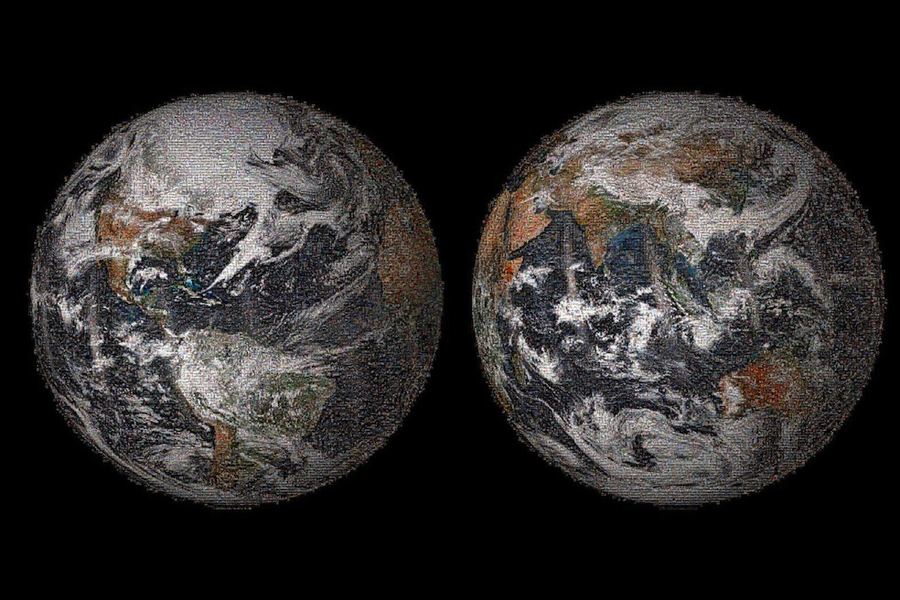NASA Reveals 1st Global Selfie (Photo)

NASA has created what appears to be the first "global selfie" of all time, making a mosaic image of the planet from pictures snapped on Earth Day.
A grand total of 36,422 images make up the 3.2-gigapixel Global Selfie, which the space agency released yesterday (May 22). NASA asked social media followers to post pictures of themselves tagged #globalselfie on and around April 22, and then gathered these photos into a mosaic mimicking satellite images taken of the globe on that day.
People from 113 countries on every continent posted selfies on Twitter, Instagram, Facebook, Google+ and Flickr. Zooming in on NASA's GigaPan site, individuals are visible. Many hold printed signs that say "Hi NASA! I'm on Earth Right Now." [Earth From Above: 101 Stunning Images from Orbit]
Participants range in age from infancy to old age, and a quick perusal reveals at least one Chihuahua, a fuzzy kitten and a rhinoceros making up some of the squares in the Atlantic Ocean.
The reference image for the mosaic comes from the Suomi National Polar-orbiting Partnership (NPP) satellite, a joint mission of NASA and the National Oceanic and Atmospheric Administration. The Visible Infrared Imaging Radiometer Suite aboard the satellite captured views of each hemisphere on Earth Day 2014. Land, water, vegetation and cloud cover are visible, as well as long diagonal stripes in the ocean, which are actually the reflection of sunlight back toward space.
Part of NASA's goal with the Global Selfie was to draw attention to the agency's Earth-focused research. This year, NASA plans to launch five missions with Earth science goals. The Global Precipitation Measurement mission observatory went into orbit in February. On July 1, the Orbiting Carbon Observatory-2 (OCO-2) will launch. Third up is the Soil Moisture Active Passive mission in November, which aims to map the planet's soil moisture and freeze-thaw cycle.
The other two missions will be based on the International Space Station. On June 6, NASA plans to send an instrument called ISS-RapidScat to the ISS in order to track ocean winds. And on Sept. 12, a resupply flight will send up the Cloud-Aerosol Transport System (CATS), which will use lasers to measure particulate matter in the atmosphere. These missions are the next phase in the life of the ISS, said space station chief scientist Julie Robinson of NASA's Johnson Space Center in Houston in a January statement.
Get the Space.com Newsletter
Breaking space news, the latest updates on rocket launches, skywatching events and more!
"This is just the beginning of the space station becoming a part of the global Earth-observing network," Robinson said.
Editor's Note: If you have an amazing Earth or general science photo you'd like to share for a possible story or image gallery, please contact managing editor Jeanna Bryner at LSphotos@livescience.com.
Follow Stephanie Pappas on Twitter and Google+. Follow us @livescience, Facebook & Google+. Original article on Live Science.
Join our Space Forums to keep talking space on the latest missions, night sky and more! And if you have a news tip, correction or comment, let us know at: community@space.com.

Stephanie Pappas is a contributing writer for Space.com sister site Live Science, covering topics ranging from geoscience to archaeology to the human brain and behavior. She was previously a senior writer for Live Science but is now a freelancer based in Denver, Colorado, and regularly contributes to Scientific American and The Monitor, the monthly magazine of the American Psychological Association. Stephanie received a bachelor's degree in psychology from the University of South Carolina and a graduate certificate in science communication from the University of California, Santa Cruz.
